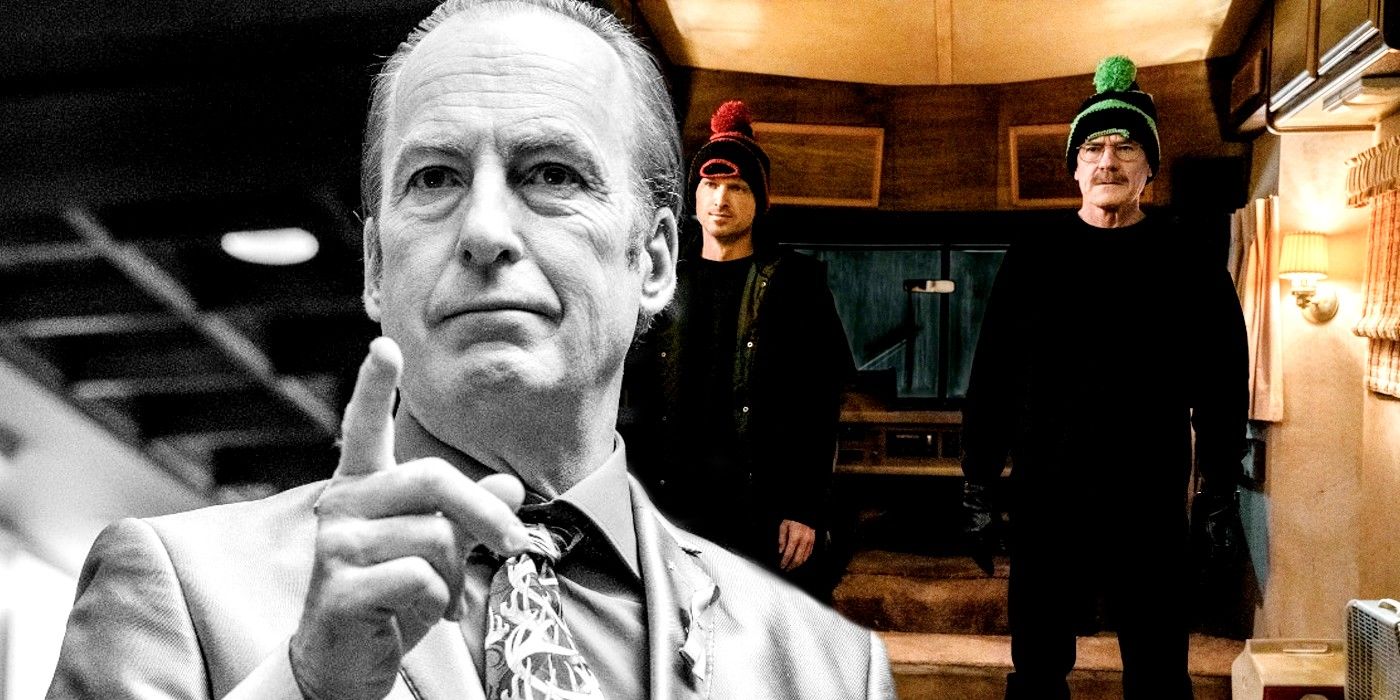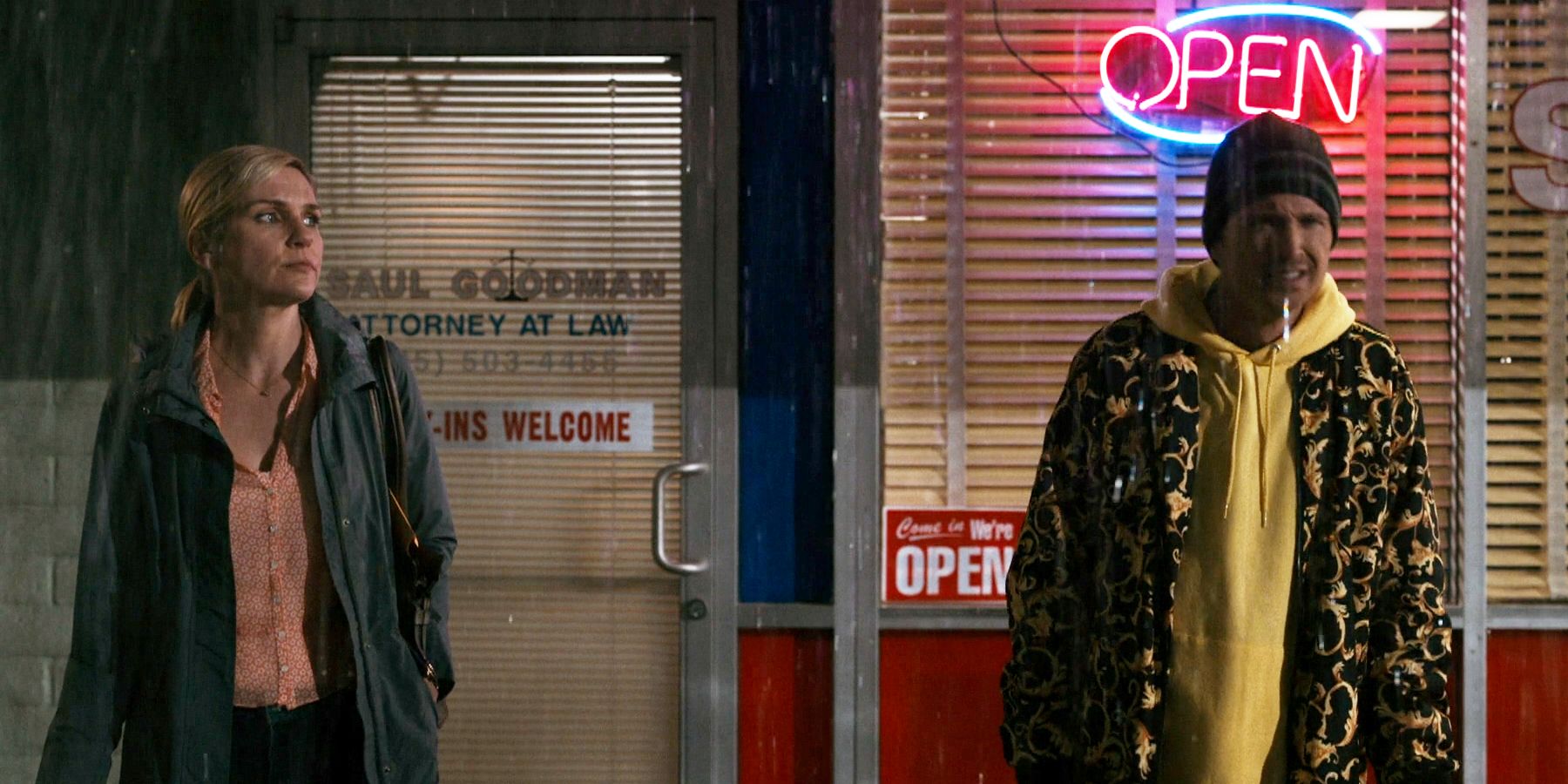Better Call Saul's final episode just went right ahead and revealed the true genius behind Walter White and Jesse Pinkman's cameos earlier in season 6. When Bryan Cranston and Aaron Paul were confirmed for cameos in Better Call Saul's final season, viewers were more surprised that their appearances were announced in advance than by the appearances themselves. But despite knowing what was coming, despite the obvious age difference, and despite neither character having an obvious entry point into Jimmy McGill's solo series, Walt and Jesse's returns were a triumph.
Set during Breaking Bad season 2's desert kidnap, Walt and Jesse's long-awaited Better Call Saul debut shows what happened immediately after Saul agreed to help with their Badger problem. Elsewhere in the very same episode, future Jimmy is becoming increasingly villainous in the Gene timeline, so showing the moment he "broke bad" with Walt and Jesse ties the two eras together nicely. Better Call Saul also draws a direct parallel between Walter White's cancer in the past and a victim of Gene's latest scam in the future. The true purpose of Better Call Saul revisiting Breaking Bad's desert scene, however, only becomes clear in series finale, "Saul Gone."
Better Call Saul's final episode is all about Saul Goodman's pivot back into Jimmy McGill. When Bob Odenkirk's evil legal mastermind begins his sentence negotiation, he spins an alternate version of Walt and Jesse driving him out to the desert bound and bagged, rewriting history by claiming he was coerced into becoming Heisenberg's accomplice. Thanks to Walt and Jesse's cameos, audiences saw first-hand just how false this testimony is. Saul was fascinated by Walt's operation upon witnessing the RV meth lab for himself, and the dollar signs in his eyes could be seen for miles. The lawyer virtually pitched himself to Walt and Jesse on the spot before later approaching Heisenberg at his workplace. The way Better Call Saul's finale weaves Saul's kidnap story into Jimmy McGill's eventual redemption means Walt and Jesse's cameos were secretly crucial to the impact and power behind Jimmy's courtroom confession.
Better Call Saul's Finale Pays Off Jesse's Solo Cameo Too
As well as Jesse Pinkman's cameo alongside Walt in Better Call Saul's "Breaking Bad" episode, Aaron Paul's Jesse Pinkman makes a solo outing in "Waterworks." Set shortly before Breaking Bad season 1, Jesse is hanging around Saul Goodman's office waiting for Combo when Kim Wexler appears, fresh from signing her divorce papers. When Jesse asks for an appraisal of whether Saul is "any good," Kim replies sharply with "when I knew him, he was." The line is effectively Kim distancing herself from Saul Goodman - sadly acknowledging Jimmy McGill is long gone, and the man who just signed her divorce is barely recognizable from the man she married.
Kim Wexler's and Jesse Pinkman's "Waterworks" conversation plays directly into Better Call Saul's final sequence, where Kim visits Jimmy in prison. Clapping eyes on her reformed ex-spouse, Kim's first words are "hi Jimmy." Whereas "when I knew him, he was" denoted Kim coming to accept Jimmy was gone, "hi Jimmy" denotes Kim celebrating his return.
The danger Better Call Saul faced in bringing Bryan Cranston and Aaron Paul back to the Breaking Bad universe was failing to tie their appearances into Jimmy McGill's wider story - cameos for the sake of cameos. Better Call Saul avoided that pitfall easily, but "Saul Gone" goes further, making the returns of Walter White and Jesse Pinkman not just relevant to Better Call Saul's ending, but integral.


